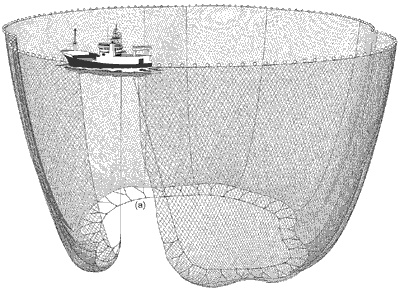
Kenalkan teman saya: Paracheirodon axelrodi! Nama kerennya disini? cardinal tetra!
Ini bukan nama merk celana atau merk kopi ya? Ini nama ikan hias asal sungai Amazon. Tepatnya di Rio Negro, di Brazil sana.
Tampangnya keren. Terlihat indah malah. Mungkin karena perawakannya juga ya?
Badannya munggil, panjangnya tak lebih dari sebatang korek api, sekitar 5 centimeter-an. Besarnya tak lebih dari jari kelingking. Mata dan mulutnya yang kecil di ujung serasi dengan tubuhnya. Makanya tak heran kalau ikan ini jadi salah satu ikan hias aquarium yang sangat populer di dunia. Malah, Cardinal tetra ini dikenal sebagai ikan paling cakep (baca : indah) dari seluruh keluarganya. Keluarga Characidae. Mungkin yang bisa nyaingin adalah sepupu terdekatnya : Neon tetra.
Nah untuk membedakan dengan sepupunya, Neon tetra, Cardinal Tetra di beberapa negara Eropa, Inggris misalnya, dikenal dengan nama Red Neon Tetra. Ini sesuai dengan warna merah yang tersapu menyeluruh di badannya di bawah warna biru. Warna Ini juga yang membedakan dengan sepupunya, yang warna merah dan birunya hanya tersapu sebagian di badannya.
Yang bikin ikan ini indah dan banyak disukai para aquarist adalah warna biru dan merah yang membentang sepanjang Linear cateralis, itu tu...garis renang yang memanjang dari perut ke ekornya. Sehingga kalau dilihat dari jarak tertentu, yang terlihat bisa hanya warna biru terang mirip nyala lampu neon saja yang bergerak-gerak hilir mudik. Cool..!
Warna terang di badannya itu? Tenang, itu bukan listrik ko. Dan ga berbahaya. Cardinal tetra ini bukan jenis ikan laut dalam yang bisa menghasilkan listrik sendiri, atau belut listrik yang bisa menyengatkan listrik sebagai cara pertahanan diri. Warna terangnya itu hanya pantulan sinar dari partikel iridescent. Diduga warna terangnya itu agar bisa terlihat oleh kelompoknya dan mengikuti gerak kelompoknya. Maklum sungai amazon kan rada butek juga warnanya. Gak percaya??
Tapi entah mungkin karena ikan impor atau entah apa, Cardinal tetra ini termasuk ikan yang manja. Ikan ini sangat sulit beradaptasi dengan lingkungannya yang baru. Beda suhu air atau Ph atau beda cuaca dikit ajah ikan ini biasanya langsung klepek-klepek masuk angin atau demam filek. (Bagi ikan, meriang dikit ajah sudah jadi ancaman...kalau diibaratkan penyakit pada manusia meriangnya ikan ini setara dengan stroke lah.. kan ga mungkin ikan gagal jantung apalgi paru-paru basah..ikan kan ga punya paru-paru). Makanya memelihara ikan ini butuh perhatian yang extra.
Agak berbeda dengan sepupunya, Neon tetra, yang walaupun kurang di gemari para aquarist, kemampuannya untuk beadaptasinya lebih tinggi. Ko bisa ya??
Secara naluri Cardinal tetra ini termasuk ikan yang over act. Ikan yang tak mau diam... tapi walaupun ikan ini termasuk ikan yang aktif, tapi ia juga agak pemalu kalau untuk beraktifitas di tempat terbuka. Senengannya bergerombol hilir mudik disela-sela tanaman air. Ditempat-tempat yang agak tertutup. Ini mungkin karena bawaan genetik dari tempat asalnya di sungai Amazon sana. Di sana (entah karena indahnya (baca : warnanya) atau lemahnya atau rasanya) Cardinal tetra ini termasuk mangsa empuk yang digemari para ikan predator. Jadi, walaupun ikan ini sudah dibawa ke aquarium yang aman dan gak ada ikan predatornya, kebiasaann dari nenek moyangnya untuk bergerombol dan main ditempat agak gelap tetep saja gak bisa hilang. Ah, dasar ikan....
Nah itu ikan caridinal Tetra. Tertarik memelihara?
Jika Anda berniat memelihara ikan Cardinal tetra, Saya sarankan untuk memeliharanya lebih dari delapan ekor dalam satu akuarium. Kasihan kalo melihara cuma seekor. Belum satu hari bisa-bisa mati kesepian dia. Hehehe....
Mohon maaf apabila ada kesamaan nama, tempat, karakter, sifat, dan cerita. Ini semata-mata bukan disengaja..
:: untuk ikan ini sengaja saya pajang disini.
Mudah-mudahan ga bau amis...hehehe::
Selanjutnya...ingin tahu cara clown fish dan fugu mempertahankan diri?
Baca selengkapnya...setelah ini





























